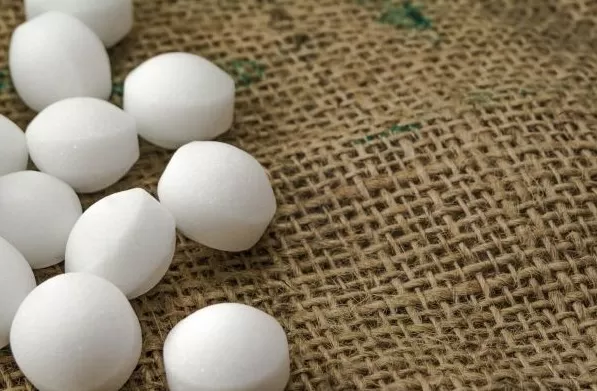Accidental Home Poisoning: Hidden Hazards to Be Aware Of. Maintaining a clean and tidy home is often associated with safety and well-being.
However, it is important to be aware that there are several potentially hazardous substances that can be found in seemingly innocuous products within our own households. These hidden dangers pose risks that may not be immediately apparent. These examples highlight the importance of being mindful of potential hidden dangers within our homes. It is essential to read labels, follow instructions, and take appropriate precautions when using household products. Additionally, staying informed about potential hazards and seeking professional assistance when needed can contribute to a safer living environment.
Reduced Formaldehyde Emissions and Mitigation Strategies for Pressed Wood Paneling & Particleboard Furniture

Pressed wood paneling and particleboard furniture have gained popularity as cost-effective alternatives to solid wood in the realm of home construction and furnishing.
However, the manufacturing process of these products involves the utilization of scrap wood and sawdust, which are combined using chemical-laden glues and resins containing urea-formaldehyde. This poses a significant concern as formaldehyde tends to escape into the surrounding air, leading to various health issues such as watery eyes, throat irritation, and breathing difficulties.
Disturbingly, scientific research suggests that this hazardous chemical might even be a human carcinogen, potentially causing specific types of cancer.
Fortunately, there is some positive news for those who already possess particle board-based walls or furniture.
Over time, pressed wood products tend to release fewer amounts of formaldehyde into the environment as they age. Additionally, individuals can adopt certain measures to minimize the risk of exposure to formaldehyde fumes, particularly during the humid summer months.
Running a dehumidifier and air conditioner can help in this regard, as they effectively regulate indoor moisture levels and improve Air Quality.
By recognizing the Concerns Surrounding Pressed Wood Paneling and Particleboard Furniture, the industry has taken steps to address the issue of formaldehyde emissions.
Manufacturers have made efforts to reduce the use of formaldehyde-based adhesives and seek out alternative, less toxic bonding agents. Consequently, newer products on the market may have lower formaldehyde levels, offering improved safety for consumers.
Overall, it is crucial to be aware of the potential health risks associated with pressed wood products and take appropriate measures to mitigate exposure to formaldehyde.
By understanding the factors influencing formaldehyde emissions, individuals can make informed decisions when choosing furniture and adopt strategies to create a healthier indoor environment.
Minimizing Indoor Air Pollution from Wall-to-Wall Carpeting: Choosing Low-VOC Alternatives and Effective Ventilation Strategies
The presence of glues and dyes in wall-to-wall carpeting and rugs contributes significantly to the emission of volatile organic compounds (VOCs), which are known to be a major source of indoor air pollution.
Short-term exposure to VOCs can lead to a range of health issues, including eye, nose, and throat irritation, headaches, nausea, and exacerbated allergy symptoms. It is therefore important to take proactive steps to reduce the amount of VOCs present in your household air.
One effective approach is to opt for carpeting that carries a low-VOC label.
These carpets are manufactured using adhesives and dyes with reduced VOC content, minimizing the potential for indoor air pollution. Alternatively, consider investing in cotton or wool rugs instead of synthetic ones, as these natural fibers tend to emit fewer VOCs.
If budget constraints make it difficult to purchase one of the more health-friendly options, there are still strategies you can employ to mitigate VOC exposure.
When scheduling a carpet installation, try to plan it before a planned out-of-town trip. This allows the carpet to have ample time to “air out” and release VOCs in a well-ventilated environment.
Once you return home, it is important to continue maintaining good ventilation in the area where the carpet is installed. Opening windows, using fans, and ensuring proper airflow will help to disperse any lingering VOCs and improve the overall air quality.
By being mindful of the potential health risks associated with wall-to-wall carpeting, and taking appropriate measures to minimize VOC exposure, you can create a healthier indoor environment for yourself and your family.
Opting for low-VOC carpeting or natural fiber rugs, scheduling installations strategically, and implementing effective ventilation practices will contribute to reducing indoor air pollution and promoting well-being.
Health Considerations Surrounding Laser Printers: VOCs, Ozone, and Ultra Fine Particles

While often perceived as innocuous office equipment, laser printers can actually introduce volatile organic compounds (VOCs), ozone, and other particulates into the surrounding environment.
Particularly concerning is the emission of ultra fine particles, which have the potential to cause severe health issues, including heart and lung diseases. Although initial research suggests that these particles disperse relatively quickly, it is advisable to exercise caution and avoid prolonged proximity to the printer while it is in use.
One of the primary concerns associated with laser printers is the release of VOCs.
These compounds, originating from the inks and toners used in the printing process, can contribute to indoor air pollution. VOCs have been linked to various health problems, such as eye and respiratory irritation, headaches, and even long-term effects on the central nervous system.
Ensuring proper ventilation in the printing area, such as by opening windows or using exhaust fans, can help reduce VOC concentrations and minimize associated risks.
Another issue is the production of ozone during the printing process.
Ozone is a reactive gas that can cause respiratory issues, particularly for individuals with pre-existing respiratory conditions. To mitigate ozone exposure, it is recommended to position laser printers in well-ventilated areas or utilize air purifiers equipped with ozone filters.
Of significant concern are the ultra fine particles emitted by laser printers.
These microscopic particles can penetrate deep into the respiratory system and potentially contribute to cardiovascular and pulmonary diseases. While studies suggest that these particles disperse relatively quickly, it is prudent to avoid prolonged exposure by maintaining a safe distance from the printer during operation.
Additionally, ensuring adequate ventilation in the printing area can help dilute and remove these particles from the air.
In conclusion, it is important to be aware of the potential health risks associated with laser printers.
To minimize exposure to VOCs, ozone, and ultra fine particles, consider implementing measures such as proper ventilation, maintaining a safe distance from the printer while it is in use, and utilizing air purifiers if necessary. Prioritizing a well-ventilated workspace and being mindful of potential health hazards can contribute to a healthier printing environment.
The Risks of Air Fresheners: Pollutant Release and the Importance of Ventilation
Creating a clean and fresh-smelling environment is a common desire for many homeowners.
However, it is worth considering alternative methods, such as simply opening windows, rather than relying solely on canned air fresheners. Excessive use of these products or their application in small, poorly ventilated spaces can lead to the release of toxic levels of pollutants, posing potential health risks.
One concern is the presence of ethylene-based glycol ethers in air fresheners, which are classified as toxic substances.
When these compounds are released into the air, they can contribute to indoor air pollution. Prolonged exposure to high concentrations of these pollutants has been associated with various health issues.
To minimize the potential risks, it is advisable to limit the use of air fresheners and ensure proper ventilation in the area where they are used.
Another factor to consider is the interaction between terpenes, which are commonly found in air fresheners, and ozone present in the air.
While terpenes themselves are typically non-toxic, when combined with ozone, they can form a harmful combination. This interaction can result in the production of secondary pollutants that have been linked to respiratory problems and other adverse health effects.
Maintaining good airflow and ventilation throughout the space can help prevent the accumulation of these airborne chemicals and reduce the associated health risks.
It is important to note that a single spritz of air freshener is unlikely to cause immediate harm.
However, it is crucial to prioritize air circulation in the area where air fresheners are used to avoid the potential buildup of harmful substances. Opening windows, using fans, or employing other means of ventilation can help disperse pollutants and maintain a healthier indoor environment.
In summary, while the desire for a pleasant-smelling home is understandable, it is important to be aware of the potential risks associated with air fresheners.
By minimizing their use, ensuring proper ventilation, and exploring alternative methods of freshening the air, such as opening windows, you can reduce your exposure to pollutants and create a safer and healthier living space.
The Hazards of Mothballs: Toxic Chemicals and Safer Alternatives

Protecting winter sweaters from moth damage is a common concern, but it is essential to recognize that mothballs, while effective as pest repellents, can pose significant health risks due to the presence of toxic chemicals.
Two common chemicals found in mothballs are paradichlorobenzene and naphthalene, both of which have been associated with potential health hazards.
Paradichlorobenzene, in particular, has been shown to cause cancer in animals.
While the direct link to human cancer is not yet fully established, it is prudent to exercise caution when using products containing this chemical. Naphthalene, another component of mothballs, can lead to symptoms such as nausea and digestive ailments when exposed to high concentrations.
If you choose to use mothballs, it is crucial to handle them with care and take appropriate precautions.
Placing them in a sealed container can help minimize the release of toxic vapors into the surrounding environment. Additionally, it is advisable to use mothballs in a separate, well-ventilated area of your house, such as an attic, where the fumes can be contained and not spread throughout the living spaces.
Before wearing clothing that has been stored with mothballs, it is essential to wash them thoroughly.
This process helps dislodge any lingering toxic vapors and reduce the risk of exposure. Alternatively, consider switching to safer, natural alternatives like cedar chips, which act as a repellent to moths without the use of harmful chemicals.
By being mindful of the potential health hazards associated with mothballs and adopting safer practices, you can protect both your clothes and your well-being.
Exploring alternative methods such as sealed containers, separate ventilation, and natural repellents can provide a safer approach to warding off moths while minimizing the risks posed by toxic chemicals.
*The information is for reference only.